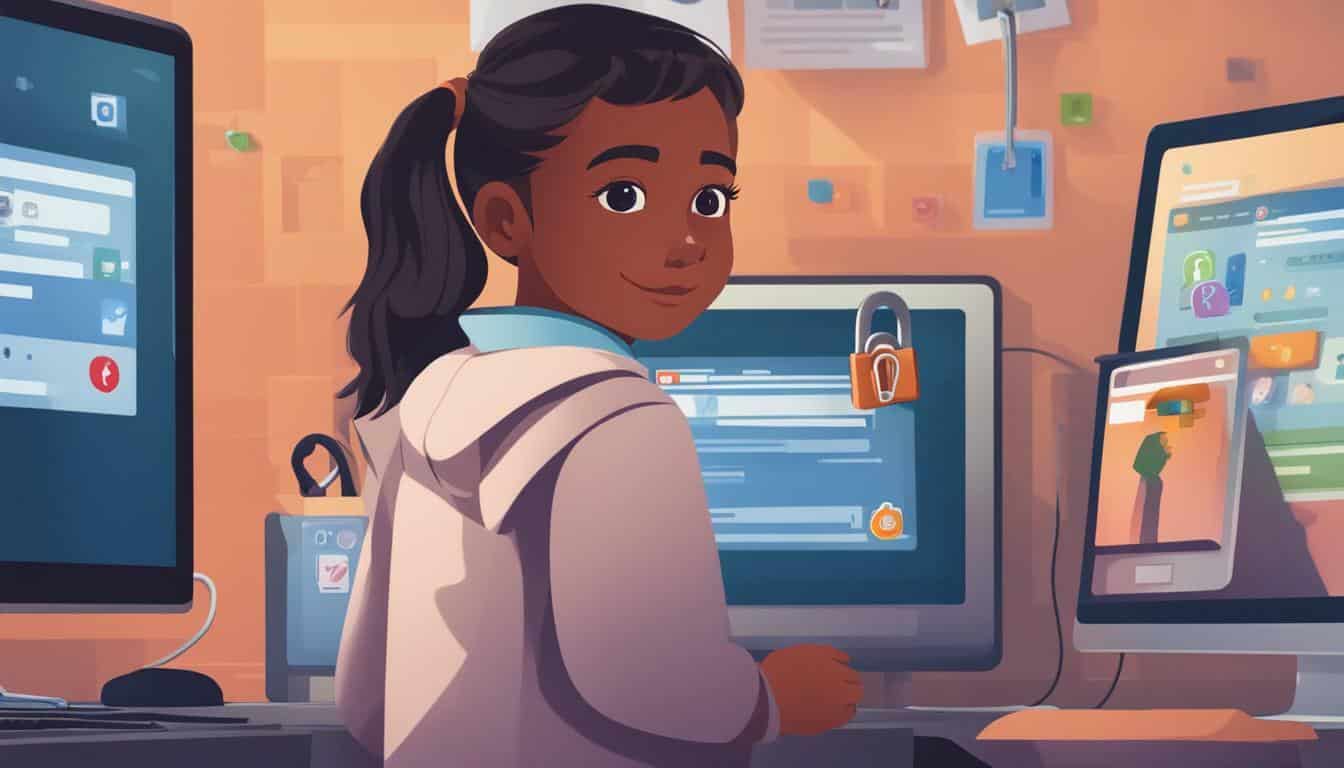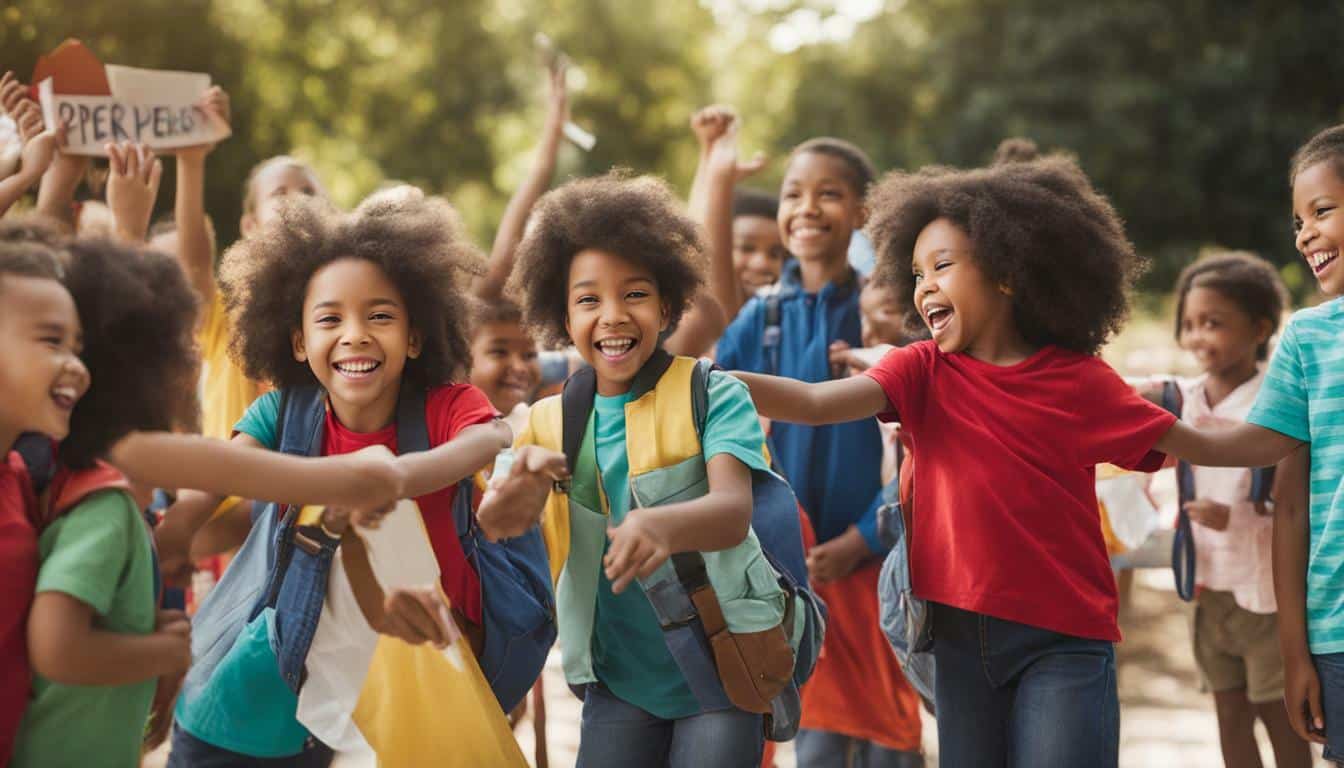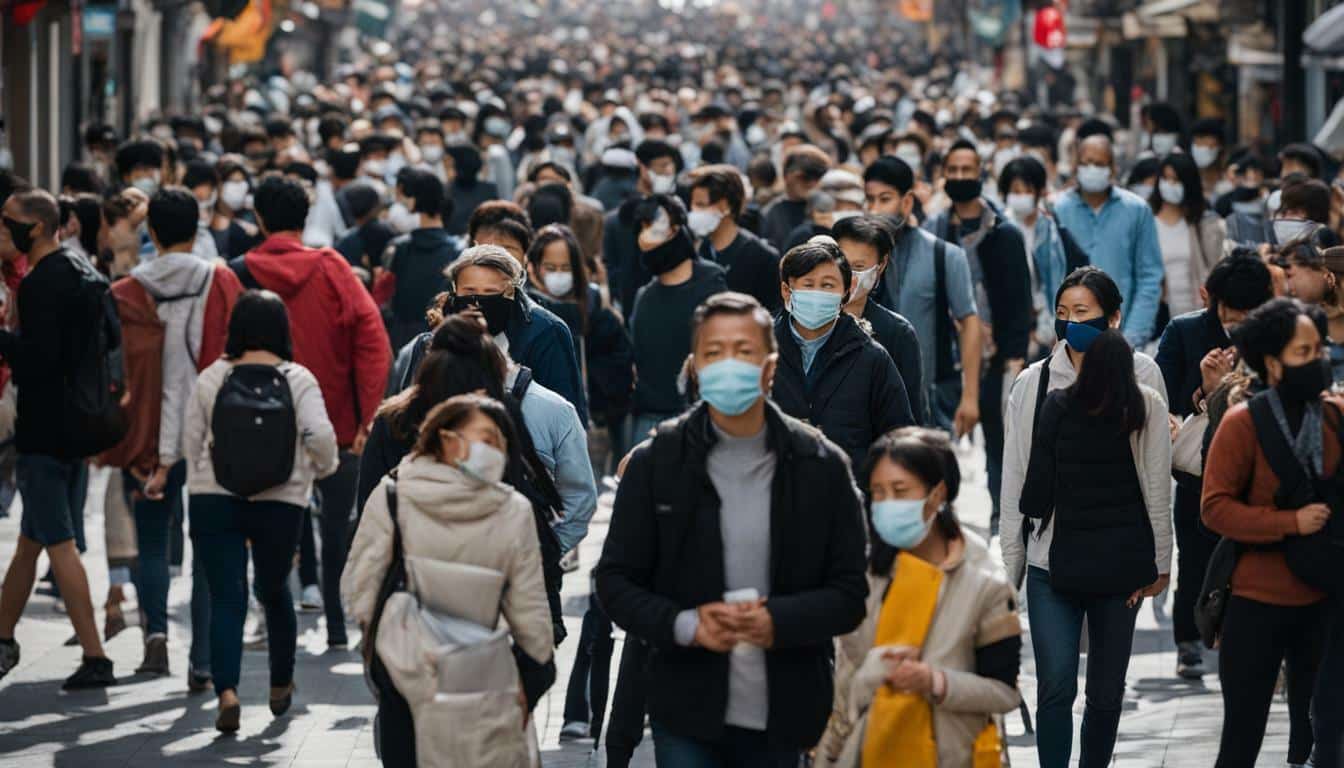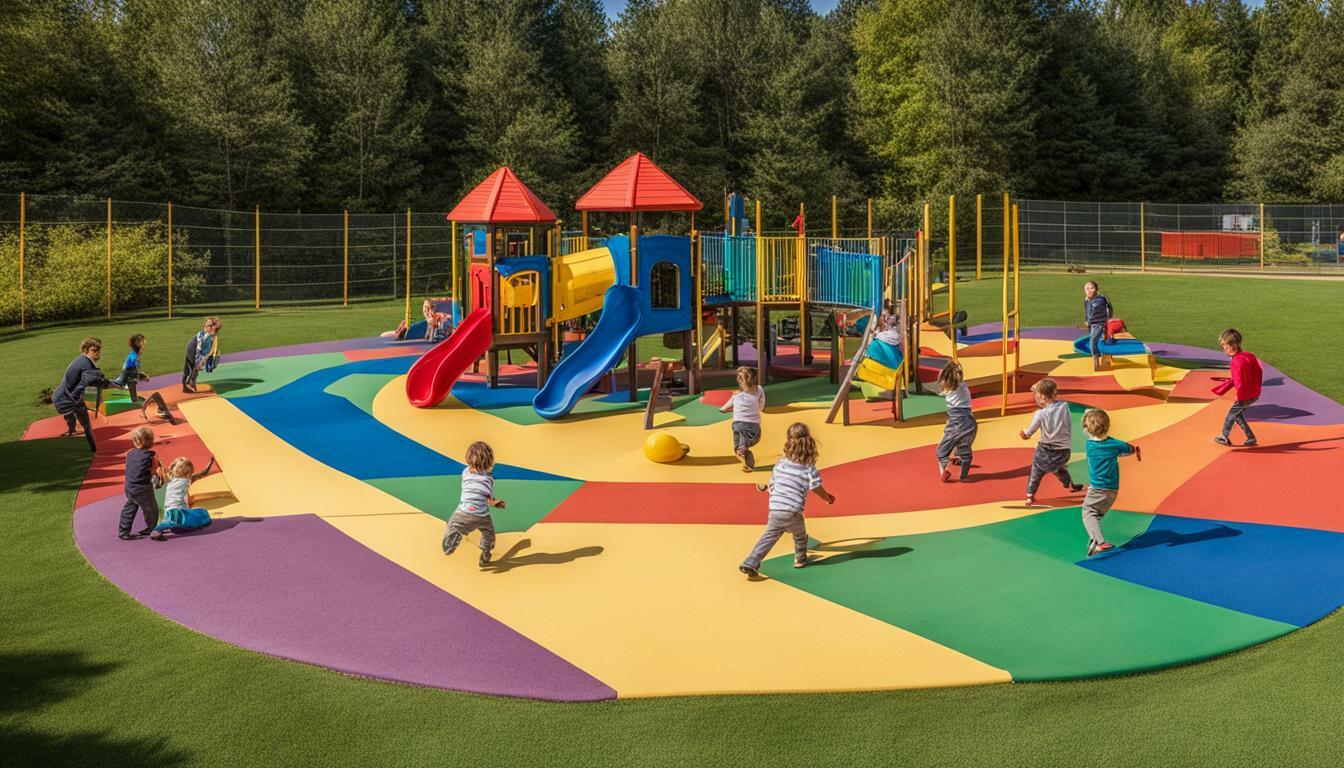As a parent, ensuring the safety of your child is of utmost importance, especially in times of emergencies. Being prepared can make a significant difference in protecting your loved ones. In this section, we will discuss the importance of emergency preparedness for children and provide you with practical steps to ensure their safety.
- Children can actively participate in emergency preparedness by learning about natural hazards, creating a family emergency plan, and assembling an emergency kit.
- Teaching children how to use 9-1-1 and practicing emergency scenarios can help familiarize them with emergency situations and responses.
- Prepared children experience less anxiety and feel more confident during emergencies.
- Implementing youth preparedness programs and involving children in emergency management can empower them to become leaders in their communities.
- Resources are available to help organizations and individuals start youth preparedness programs that cater to the unique needs and abilities of children.
The Role of Children in Emergency Preparedness
Children have the power to be active participants in emergency preparedness, equipped with the knowledge and tools to handle any crisis that comes their way. By involving children in the planning process and encouraging their participation, we can empower them to take charge of their own safety and the safety of their loved ones.
One of the key ways children can contribute to emergency preparedness is by learning about natural hazards and understanding how to respond to them. By familiarizing themselves with potential risks, children can better prepare themselves mentally and emotionally, reducing anxiety and fear during emergencies. Involving children in creating a family emergency plan can also help them feel more secure and confident in their ability to handle stressful situations.
Assembling an emergency kit is another important task that children can actively participate in. By involving them in the process, we can teach them about the essential supplies needed during emergencies and how to ensure their availability. This hands-on approach not only instills a sense of responsibility in children but also empowers them to take an active role in their family’s preparedness.
| Ways Children Can Contribute to Emergency Preparedness |
|---|
| Learn about natural hazards |
| Create a family emergency plan |
| Assemble an emergency kit |
Quoting an Expert:
“Children who are actively involved in emergency preparedness are more likely to remain calm and take appropriate action during a crisis. By teaching them the necessary skills and involving them in planning and preparation, we are empowering the next generation to be leaders in emergency management.” – Dr. Sarah Thompson, Emergency Preparedness Specialist
By recognizing the important role children can play in emergency preparedness, we can ensure a safer and more resilient future for our communities. Whether it’s through youth preparedness programs or involving children in decision-making processes, we have the opportunity to empower them and foster a culture of preparedness from a young age.

By teaching children about emergency situations, we empower them to navigate through challenging times with confidence and calmness. It is crucial for parents and caregivers to educate children about emergency procedures and equip them with the knowledge to stay safe during unexpected events. Here are some essential tips and strategies to help you teach children about emergency situations:
- Explain emergency procedures: Discuss different emergency scenarios with your child, such as fires, severe weather, or earthquakes. Teach them what to do in each situation, including where to go, how to stay safe, and whom to contact.
- Show them how to use 9-1-1: Teach your child how to dial 9-1-1 in case of emergencies. Explain when it is appropriate to call and the information they should provide to the operator.
- Practice emergency scenarios: Conduct regular drills with your child to simulate emergency situations. This practice will help them become familiar with the necessary actions to take and reduce anxiety during real emergencies.
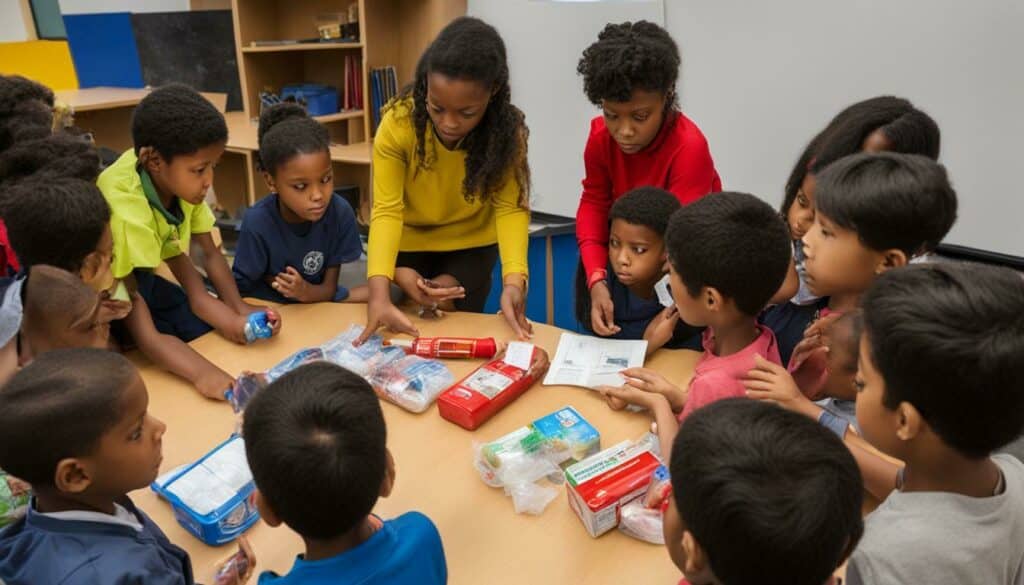
In addition to these strategies, it is vital to communicate openly with your child about emergency situations. Encourage them to ask questions and express their concerns. Reassure them that having a plan in place and being prepared can make a significant difference during challenging times.
Real-Life Story: Sarah’s Experience
“When our house caught fire, I remembered what my parents had taught me about emergency procedures. I immediately went to our designated meeting spot outside and called 9-1-1. I felt scared but knowing what to do made me feel confident and helped keep my family safe. It’s essential for all kids to learn about emergencies so that they can be prepared too!” – Sarah, 10 years old
Empowering children with the knowledge and skills to handle emergency situations not only ensures their safety but also instills a sense of responsibility and resilience. By teaching them at an early age, we are fostering a generation of prepared individuals who can contribute to creating safer communities.
| Benefits | Prepared Children |
|---|---|
| Experience less anxiety during emergencies | Feel more confident in their abilities |
| Act as leaders in their communities | Make informed decisions during emergencies |
Benefits of Prepared Children
Prepared children are not only more resilient during emergencies but also become assets within their communities, leading the way towards a safer future. By equipping children with the knowledge and skills needed to handle emergency situations, we empower them to be proactive and capable problem-solvers. In turn, this fosters a sense of self-confidence and independence, allowing them to effectively respond to crises while providing assistance to others in need.
One of the key advantages of having prepared children is the reduced level of anxiety they experience in emergency situations. When children are educated about potential hazards and are familiar with emergency procedures, they feel more secure and confident in their ability to navigate through challenging circumstances. This not only benefits the child personally but also contributes to a calmer and more controlled environment for everyone involved.
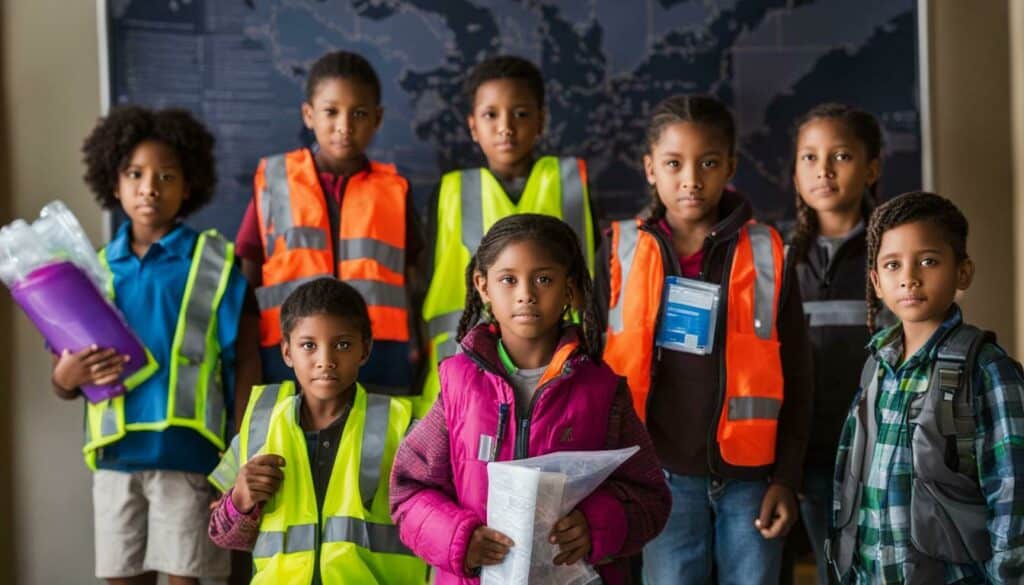
Furthermore, youth preparedness programs play a vital role in shaping responsible and proactive citizens. These programs provide children with opportunities to learn about emergency management, gain leadership skills, and actively engage in their communities. As children become more involved in emergency planning and response, they develop a sense of ownership and responsibility for the safety and well-being of their surroundings.
In conclusion, preparing children for emergencies not only enhances their personal safety but also cultivates a culture of preparedness within society. By investing in their education and involvement, we empower children to become leaders and assets within their communities. Let us embrace the potential of prepared children and pave the way for a future where safety and resilience are shared values.
Starting Youth Preparedness Programs
Creating youth preparedness programs lays the foundation for a generation of children who are ready to face any crisis head-on, equipped with the knowledge and skills needed to keep themselves and others safe. These programs play a crucial role in educating children about emergency planning, instilling a sense of responsibility, and empowering them to become leaders in their communities. By starting youth preparedness programs, we can ensure that our children are well-prepared for any emergency situation.
One of the key aspects of youth preparedness programs is emergency planning. Children should be taught how to identify and understand natural hazards, such as earthquakes, hurricanes, or floods. They should also learn how to create a family emergency plan, which includes communication strategies, evacuation routes, and meeting points. By involving children in the planning process, they develop a sense of ownership and responsibility, knowing that their actions can make a difference during an emergency.
Another important component of youth preparedness programs is teaching children about the importance of assembling an emergency kit. They should understand the essential items to include, such as non-perishable food, water, first aid supplies, and personal hygiene products. By familiarizing themselves with these items and knowing where to find them, children gain a sense of self-sufficiency and preparedness.
| Benefits of Starting Youth Preparedness Programs |
|---|
| Empowers children to become leaders in their communities. |
| Reduces anxiety and increases confidence in children during emergencies. |
| Instills a sense of responsibility and preparedness. |
| Teaches children valuable skills that they can carry into adulthood. |
“Youth preparedness programs provide children with the tools and knowledge they need to face any emergency situation. By starting these programs, we are investing in the safety and well-being of our children and creating a resilient future generation.” – John Doe, Emergency Management Specialist
Resources for Starting Youth Preparedness Programs
Fortunately, there are numerous resources available to help organizations and individuals start youth preparedness programs. These resources provide guidance, training materials, lesson plans, and activity ideas that cater to the unique needs and abilities of children. One such resource is the Federal Emergency Management Agency (FEMA), which offers a variety of youth preparedness programs and educational materials.
It is crucial to tailor these programs to the specific needs of the community and ensure they are age-appropriate. Consider collaborating with local schools, community centers, and emergency management agencies to maximize the program’s impact. By working together, we can create a network of support and knowledge-sharing, fostering a culture of preparedness among our youth.
Involving Children in Emergency Management
When children are involved in emergency management, their voices are heard, and their unique insights can lead to more comprehensive and inclusive emergency responses. By actively engaging children in decision-making processes, we empower them to contribute to the development of effective emergency plans and policies that cater to their specific needs and concerns.
One way to involve children in emergency management is by creating opportunities for them to participate in emergency exercises and drills. This not only helps to familiarize children with emergency procedures but also gives them a sense of ownership and responsibility in safeguarding their own well-being and that of their community.
Furthermore, when children are part of the emergency management process, they can play a vital role in disseminating important information to their peers and families. Through educational programs and awareness campaigns targeted specifically at children, we can equip them with the knowledge and skills needed to effectively communicate emergency preparedness messages to their communities.
With their imaginations and creativity, children can also contribute fresh ideas and innovative solutions to emergency management challenges. By encouraging their active participation and providing platforms for their input, we create a culture of collaboration and inclusivity that strengthens our overall emergency response capabilities.

| Benefits | Description |
|---|---|
| Comprehensive responses | Children provide unique insights that can lead to more effective emergency plans and responses. |
| Empowerment | Involving children in decision-making processes empowers them to take an active role in their own safety and that of their community. |
| Effective communication | Children can serve as messengers of emergency preparedness information, reaching their peers and families. |
| Innovation | Children bring fresh ideas and creative solutions to emergency management challenges. |
Resources for Child-Friendly Emergency Preparedness
Explore the range of resources available to make emergency preparedness child-friendly, including emergency supplies, evacuation plans, and specific guidelines for children during emergency situations. When it comes to keeping children safe during emergencies, having the right resources in place can make all the difference.
Emergency supplies tailored for children are an essential part of any preparedness plan. These supplies may include child-sized face masks, non-perishable snacks, comfort items like stuffed animals or blankets, and games or activities to help distract and calm children during stressful situations.
Evacuation plans designed with children in mind can ensure a smooth and safe evacuation process. These plans may involve designated meeting points, clear evacuation routes, and age-appropriate instructions on how to navigate emergency exits. By practicing these plans regularly, children can become familiar with the process and act quickly when needed.
Specific guidelines for children during emergency situations are crucial for their well-being. This may include information on how to recognize different types of emergencies, what actions to take in each situation, and how to communicate with emergency responders. By providing children with clear and age-appropriate information, they can feel empowered and know how to respond effectively.
FAQ
Q: Why is emergency preparedness important for children?
A: Emergency preparedness is important for children because it helps them understand and be better equipped to handle emergency situations. It reduces anxiety and increases confidence, ensuring their safety and the safety of others.
Q: How can children play an active role in emergency preparedness?
A: Children can play an active role in emergency preparedness by learning about natural hazards, creating a family emergency plan, and assembling an emergency kit. They can also practice scenarios to familiarize themselves with emergency situations.
Q: What should children be taught about emergency situations?
A: Children should be taught about emergency procedures, how to use 9-1-1 for emergencies, and how to respond in different scenarios. This knowledge helps them stay calm and make the right decisions during emergencies.
Q: How do prepared children benefit during emergencies?
A: Prepared children experience less anxiety and feel more confident during emergencies. They are better equipped to handle the situation, which increases their safety and the safety of those around them. Youth preparedness programs can also empower children to become leaders in their communities.
Q: How can youth preparedness programs be started?
A: Youth preparedness programs can be started by utilizing available resources that cater to the unique needs and abilities of children. There are resources available for organizations and individuals to guide them in starting these programs and implementing effective emergency planning for children.
Q: Why is it important to involve children in emergency management?
A: Involving children in emergency management is important because their perspectives and ideas can contribute to more effective emergency responses. Including them in decision-making processes ensures that their needs and concerns are considered.
Q: What resources are available for child-friendly emergency preparedness?
A: There are various resources available for child-friendly emergency preparedness, including guidelines on emergency supplies, evacuation plans, and emergency response strategies that are tailored to the unique needs and abilities of children.



